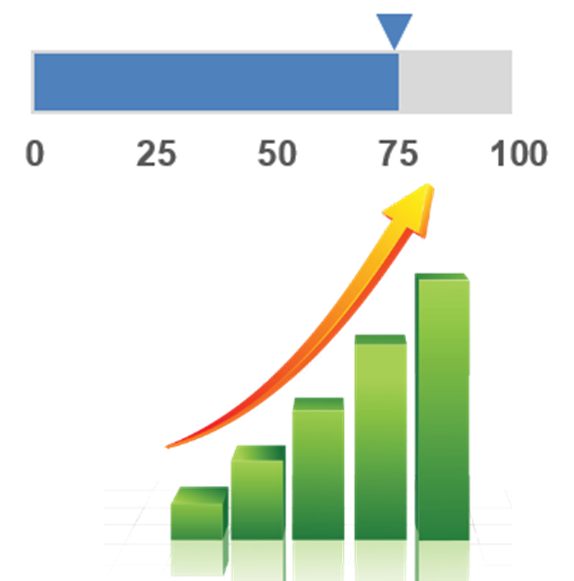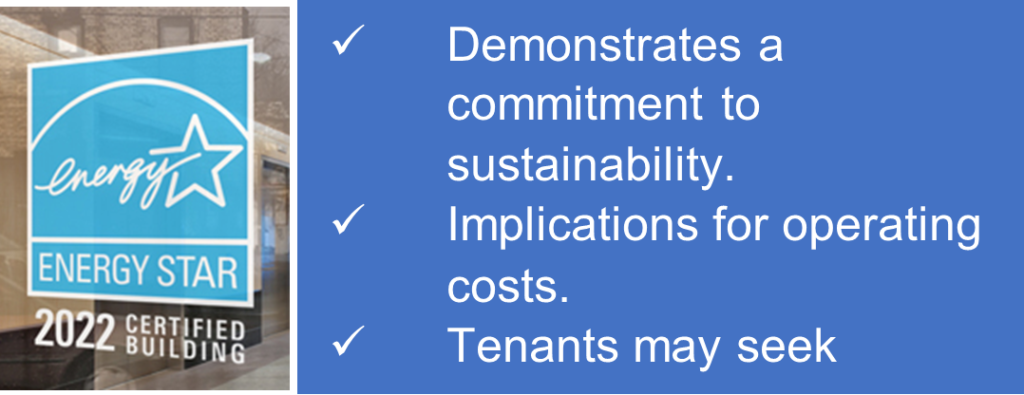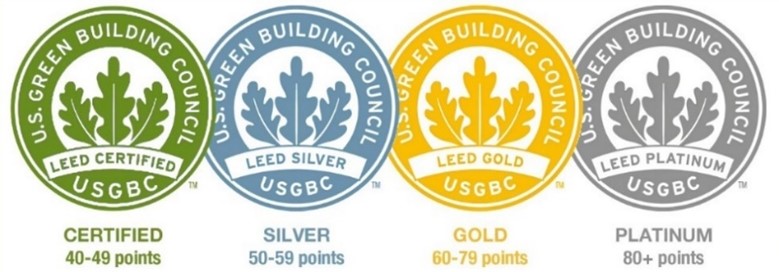Building owners and operators are faced with significant operating challenges in today’s markets. A few questions that are commonly asked may include:
- How can we reduce energy usage and operating costs most effectively?
- How can we be better stewards of the environment and promote green practices and carbon neutrality?
- What is the best way to achieve corporate ESG targets and goals?
- How can we continually add value for tenants, guests, and shareholders?
Fortunately, there are programs that can help owners and operators address these questions head-on and result in quantifiable positive impacts to building performance. ENERGY STAR® benchmarking and certification and LEED certification are two programs that focus on different aspects of building performance, but they complement each other to significantly promote sustainable buildings.
ENERGY STAR Certification
ENERGY STAR is a voluntary program backed by the Environmental Protection Agency (EPA), and consumers and businesses across America have looked to ENERGY STAR as a resource for saving energy and protecting the environment for many years. From energy efficient appliances to benchmarking commercial buildings in the EPA’s ENERGY STAR® Portfolio Manager® tool, ENERGY STAR has been leading the way to reduce energy consumption and greenhouse gas emissions.

ENERGY STAR scores range on a scale of 0 to 100, which represents how efficient a building is relative to similar buildings. For example, a score of “50” means a building is average, while a score of “75” means a building performs better than at least 75% of buildings nationwide (top 25th percentile). For buildings with a low score, ENERGY STAR provides an indicator of how far a building might be outside of “normal” energy usage and shows how energy performance improves over time with a commitment to energy efficiency.
For building performance, the Portfolio Manager tool allows owners and operators to input building characteristics along with utility usage and costs on an ongoing basis. This allows for tracking the performance of the building over time as compared to the initial baseline. The EPA also uses industry reference survey data to build a scoring system that allows for benchmarking the energy performance of a property relative to its peers. Therefore, the energy usage intensity (EUI) for a facility can be compared to other similar facilities considering several specific building factors (e.g., square footage, building use) to normalize the differences and compute a relative score.
Buildings that achieve an ENERGY STAR score of 75 or greater with other minimum thresholds (e.g., occupancy, etc.) are eligible to apply for ENERGY STAR certification. There is no cost to apply for certification, and certification can be achieved annually.

Burton Energy Group has been proud to partner with ENERGY STAR over the years to help promote ENERGY STAR certifications for buildings. Burton is honored to have recently been awarded our 11th ENERGY STAR Partner of the Year Award in 2023, with the last nine being for Sustained Excellence. Burton has professional engineers who are experienced in providing ENERGY STAR certification services for buildings, and we can provide guidance and assistance throughout the entire process. We encourage all building owners and operators to benchmark their buildings and apply for ENERGY STAR certification for their top performing buildings.
LEED Certification
Another program with a broader building performance and environmental focus is LEED (Leadership in Energy and Environmental Design), which is overseen by the U.S. Green Building Council (USGBC). While ENERGY STAR’s primary focus is on energy efficiency, LEED certification also considers additional areas such as the impact of the building on the surrounding environment (i.e., how full-time employees commute to work, cleaning supplies and procedures, waste management, ventilation requirements, etc.). LEED is not only an option for new building construction, but also is now available for existing buildings through the Operations and Maintenance (O+M) rating system.
LEED uses a points-based system (up to 100 total points available) to determine the level of certification – LEED Certified (40-49 points), Silver (50-59), Gold (60-79), and Platinum (80+). There are several different credit categories that focus on energy and water efficiency, environmental quality, sustainability, transportation, innovation, etc. For each project, several prerequisite credits and other optional credits must be achieved, depending on the level of certification the building wants to pursue. LEED also is a prolonged process that typically takes well over a year to complete from beginning to end.

The advantages of LEED are significant. Not only can LEED reduce energy and water usage and costs, but can also result in higher property valuation, potential tax benefits, and illustrate a commitment to sustainability. Tenants and businesses are also increasingly looking for buildings with LEED certification.
So, since this is a more involved process, how can a building get started with LEED certification? Due to all the nuances and options with LEED certification, it is typically best to work with a LEED Accredited Professional (LEED AP) to help navigate the process. Burton has professionals on staff who can help with this process. We can provide an initial LEED gap analysis and feasibility assessment to help identify and document the status of the building and LEED requirements for certification to determine the optimal pathway to pursue. From there, full consulting services can be provided for LEED certification. The fees for LEED certification can be significant, so it is recommended to budget for this early in the process.
As described above, ENERGY STAR certification and LEED certification are different but complementary tools that can be used to optimize energy usage and overall performance of buildings. In addition to the financial impacts, these programs provide great ways for building owners and operators to show their dedication to environmental stewardship and allow for a more sustainable future. We’ve also found that ENERGY STAR decals and LEED plaques look great when displayed in all buildings!
